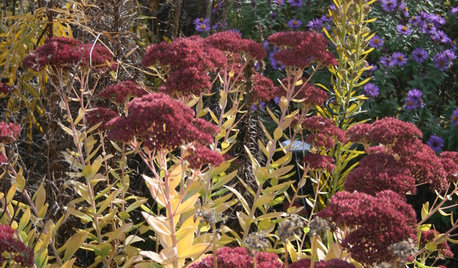Ideas for Perennials in Acidic Soil in NH
HappilymarriedinNH
9 years ago
Related Stories

GARDENING GUIDESHave Acidic Soil in Your Yard? Learn to Love Gardening Anyway
Look to acid-loving plants, like conifers and rhododendrons, to help your low-pH garden thrive
Full Story
GARDENING GUIDESHow to Stop Worrying and Start Loving Clay Soil
Clay has many more benefits than you might imagine
Full Story
FARM YOUR YARDHow to Get Good Soil for Your Edible Garden
The nutrients in your soil feed the plants that feed you. Here are tips on getting it right — just in time for planting season
Full Story
GARDENING GUIDESHow to Pick a Mulch — and Why Your Soil Wants It
There's more to topdressing than shredded wood. Learn about mulch types, costs and design considerations here
Full Story
GARDENING GUIDES8 Perennials for Great Fall Color
Trees haven't cornered the market on autumn splendor. Add these flowering perennials for a foliage sight to behold
Full Story
GARDENING GUIDES20 Favorite Flowers for Butterflies and Bouquets
Discover perennials and annuals that do double duty as butterfly magnets and versatile cut flowers
Full Story
GARDENING GUIDESNew Ways to Think About All That Mulch in the Garden
Before you go making a mountain out of a mulch hill, learn the facts about what your plants and soil really want
Full Story
GARDENING GUIDESGet on a Composting Kick (Hello, Free Fertilizer!)
Quit shelling out for pricey substitutes that aren’t even as good. Here’s how to give your soil the best while lightening your trash load
Full Story
EDIBLE GARDENSNatural Ways to Get Rid of Weeds in Your Garden
Use these techniques to help prevent the spread of weeds and to learn about your soil
Full Story
GARDENING GUIDESGarden Myths to Debunk as You Dig This Fall and Rest Over Winter
Termites hate wood mulch, don’t amend soil for trees, avoid gravel in planters — and more nuggets of garden wisdom
Full StoryMore Discussions







gardenweed_z6a
NHBabs z4b-5a NH
Related Professionals
Wrentham Landscape Architects & Landscape Designers · Cottonwood Landscape Architects & Landscape Designers · Port Royal Landscape Architects & Landscape Designers · Paradise Landscape Architects & Landscape Designers · Medford Landscape Contractors · Broomfield Landscape Contractors · Cambridge Landscape Contractors · Canyon Lake Landscape Contractors · Crystal Landscape Contractors · Longview Landscape Contractors · Soddy Daisy Landscape Contractors · Tehachapi Landscape Contractors · Tinton Falls Landscape Contractors · Vashon Landscape Contractors · Wareham Landscape Contractorsedlincoln
HappilymarriedinNHOriginal Author
gardenweed_z6a